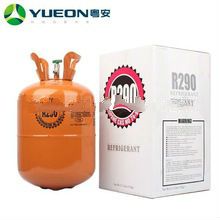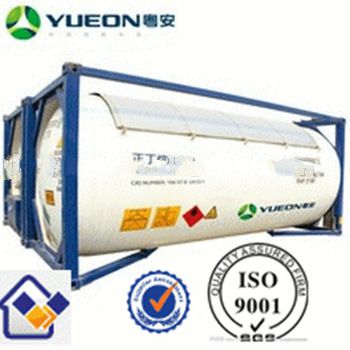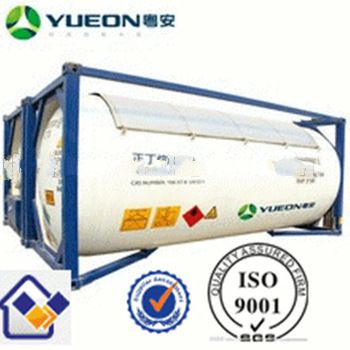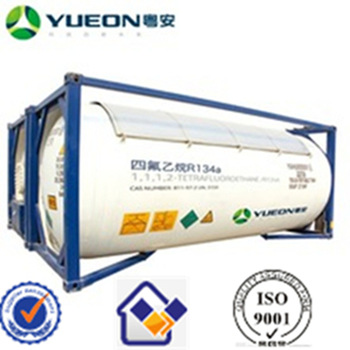Specifications
R600a Refrigerant Grade Isobutane
Natural refrigerants
Zero ozone depletion potential
Very low global warming potential
Isobutane (R600a) is a naturally occurring refrigerant. Isobutane (R600a) and CO2 are the two mostly discussed and researched refrigerants for the future. And both with low global warming potential and ozone depletion potential are excellent refrigerants for a nature friendly refrigeration and air-conditioning. But with research on carbon dioxide cycles are still in a premature stage, R600a cycles can use current vapor compression systems with little design tweaking. Recent concerns with depletion of the ozone layer by freon gases (R12, R134a) have led to increased use of isobutane (R600a) as a gas for refrigeration systems, especially in domestic refrigerators and freezers.
Product safety R600a has some different chemical properties than fluorocarbon refrigerants; the primary difference is its classification as extremely flammable. Therefore the handling and use of R600a requires adequate safety measures. This is especially true if a system is being considered for retrofitting – replacing a non-flammable fluorocarbon refrigerant with R600a. Our highly experienced experts are available to provide advice on how to handle and use our products in the safest way.
advantage: high quality R600a YUEAN can provide you an assured level of quality. Our R600a is at least 99.5% pure with minimal levels of critical impurities including moisture (typically† <10ppm), unsaturated hydrocarbons (typically <0.5%) and sulphur. This makes it ideal for use in refrigeration systems
R600a refrigerant gas
(1)High purity
(2)Give you the most competitive price
(3)The best service
QULITY INDICATORS
Isobutene content % > 99.5
Sulfur content (ppm) ≤ 1.0
Moisture % ≤ 0.001
Acidity (ppm by weight,as HCL) ≤ 1.0
Residue % ≤ 0.01
Appearance colorless
Odor odorless
PHYICAL PROPERTY
Molecular formular (CH3)2CHCH3
Morlecular Weight 58.123
Boiling point -11.7
Absolute pressure(25°C) mpa 0.38
Liquid density(25°C)kg/m3 550.65
Critical temperature °C 134.9
Critical pressure mpa 3.648
ODP 0
GWP 0
USE
For refrigerant,used in refrigerator,refrigerators, cold drink machine, alternative R12.Aersol for the projectile agent for pesticides, cleaning agent, acrylic painted etc. Also used as a propellant,a solvent.
Product specifications:
R600a is commonly available in a variety of sizes of packages to meet your needs. This includes returnable cylinders and drum tanks. R600a is also available in larger packages in some countries
Refrigerant Cans: 80g;120g;420g
Disposable cylinder: 5kg/13.4L 6.5kg/13.4L 10kg/22.3L 11kg/22.3L
Recyclable cylinder: 50kg/118L 200kg/400L 400kg/800L 450kg/926L
Tank: 10T/24M3
Tank car: 28T/58M3
Selecting the refrigerant
Originally when the modern refrigerating system concept was developed in the middle of the 19th Century, a small number of fluids were used as the working fluid, or “refrigerant”. These included ammonia (NH3, R717), carbon dioxide (CO2, R744), sulphur dioxide, methyl chloride and ethyl ether. However, because of the combination of toxicity, flammability and pressure issues, these refrigerants were largely replaced with to a “new” group of fluorinated chemicals which exhibited little reactivity, low-toxicity and no flammability. However, during the 1980s, it was found that these chemicals contributed to the depletion of the ozone layer, which lead to the development of the Montreal Protocol in 1987.
The Montreal Protocol requires the cessation of the consumption and production of all chlorofluorocarbons (CFCs) and hydrochlorofluorocarbons (HCFCs) and since its introduction, the refrigeration and air conditioning (RAC) industry has been engaged with the chemical community to establish substitutes for ozone depleting refrigerants. Throughout this time a large number of refrigerants have been introduced worldwide, of which some are long term alternatives, and others are “transitional” substances. With the increasing attention paid to the issue of global warming and climate change, there is now a stronger push towards adopting alternative refrigerants with low or no global warming potential (GWP), as well as zero ozone depleting potential (ODP).
With the continued attention on replacement refrigerants, coupled with the ever growing market for RAC, there are now several hundred refrigerants that are currently commercially available. Such a diversity of refrigerants and their variety of different characteristics can create difficulties in handling and servicing practices for many RAC technicians. This section aims to introduce an overview of refrigerants and their characteristics, classifications, applications, identification and lubricants.
There are usually two situations that necessitate refrigerant selection, the first being for manufacture of systems, and the second being equipment servicing. For manufacturing RAC equipment, the refrigerant selection process is theoretically complex, involving the consideration of huge number parameters.



















